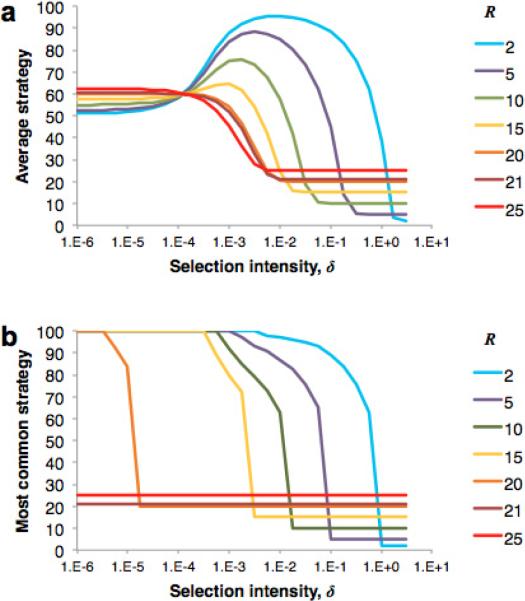Figure 3.
The average strategy (a) and the most common strategy (b) in the low mutation case as the selection strength and R vary, determined numerically (Nowak, 2006) with a population size of 200. (a) When R < (M + 1)/5 = 20.2, the average strategy initially becomes more cooperative as the selection strength δ increases. As δ gets larger and larger, however, the average strategy approaches the Nash equilibrium of R. When R > (M + 1)/5 = 20.2, the average strategy decreases monotonically with R. (b) For small values of R, the most common strategy when selection is weak is the cooperative one of claiming the largest possible value, here M = 100. As δ increases, playing the Nash equilibrium eventually becomes most common. For large values of R, the Nash equilibrium is the most common strategy regardless of selection strength.

